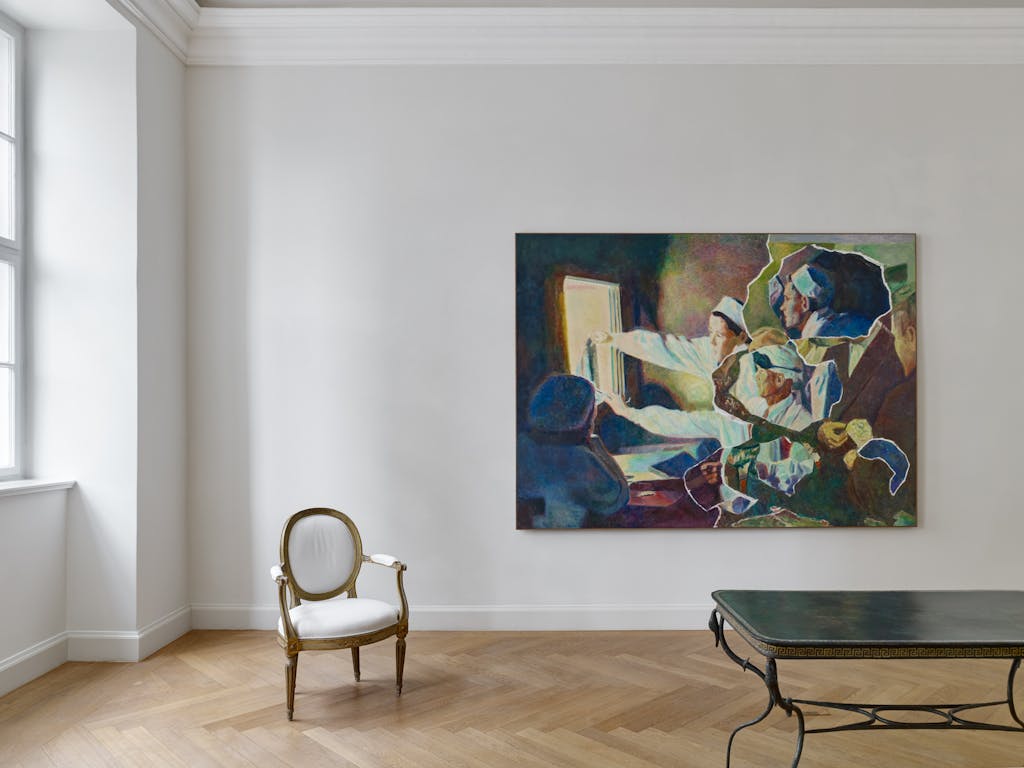Ilya Kabakov has always employed theory to reflect upon his work. He’s recently categorized the art he’s produced since 1970 under the title 'The Great Arc', dividing it into five acts of different significance and aesthetics. Whereas the white paintings initially contained small excerpts from the real world, the second-act paintings incorporate larger portions of reality. In the third act, reality ultimately blankets the entire picture surface, while in the fourth act a darkness opens up behind the reality of the paintings, which ultimately takes over the entire painting in the final, fifth act.
This show begins with the third act of the Kabakovian arc. It begins with 'The Appearance of the Collage #12' (2012), a painting that incorporates fragments of two different visual narratives—introducing what look like torn-edged magazine clippings of people into the different reality of another painting. Countering the demand for an unambiguous reading, Kabakov presents a fragmented approach to a world, portions of which can only be visually perceived by viewers, who can link them to the patchwork that they’re actually seeing when they believe they’re 'getting the whole picture'.
Located in the first room on the upper exhibition floor, 'Dark and Light #10' (2013) is a self-portrait of both artists, who are surrounded by nuanced darkness and flipped onto a horizontal plane. The strong contrast between dark and light is especially effective in the section where a white surface overlaps Emilia Kabakov’s head. In 'Vertical Painting #5' (2012), too, the pictorial space conquers the vertical plane. For Ilya Kabakov, the lower half of the picture corresponds to what the viewer finds 'correct', while the upper half is turned ninety degrees. The pictorial events vanish upward, and sections of the painting are lost in the rapid movement, like torn-out clippings sinking toward the bottom.
In the Kabakovs’ latest series 'Two Times' (2014-15), the artists allow two epochs of cultural history to collide sharply. One side features subjects of classic art history, while the other is of a personal memory of Kabakov’s Soviet homeland. In contrast to the supposed stability of the world, the fragmented character of reality and art is in the foreground. Ultimately, the paintings from the 'Two Times' series are also reflections upon memory, life, death, and, above all, upon the artist’s doubts and fears about the place of his work in the history of art.
